Those darn black-colored birds all look the same, don’t they? This article will compare Ravens, Crows, and Blackbirds found in North America using information from The Cornell Lab of Ornithology and Audubon. When you’re finished reading this you will know how to identify each species by sight and sound.
Ravens, Crows, and Blackbirds differ from each other in various ways. Ravens are the biggest of the three species. All are glossy black, though crows give off a violet hue and Rusty Blackbirds reflect blue-green to green. All three species have different shapes in their wings, bills, and tails.
In the remainder of this article, I will go into detail about each species. I will present various comparisons of the three and by the end of the post, you will be confident you know the difference between them.

Size Comparison
In the image below, you can see the tree species compared side-by-side:
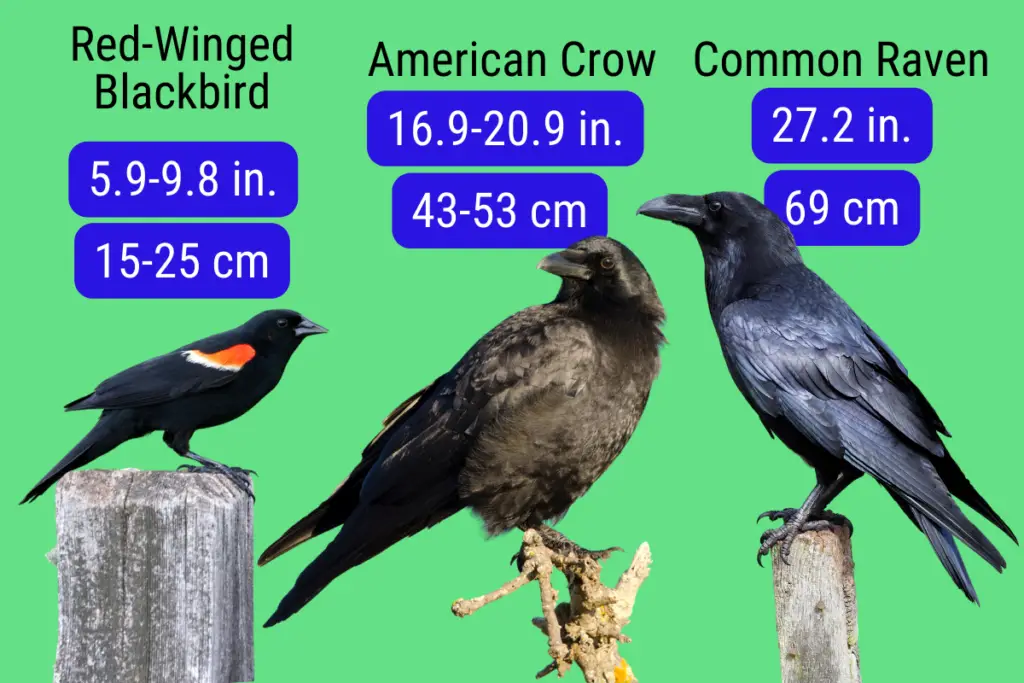
Let’s compare each bird’s size to a common object; an adult-sized basketball:
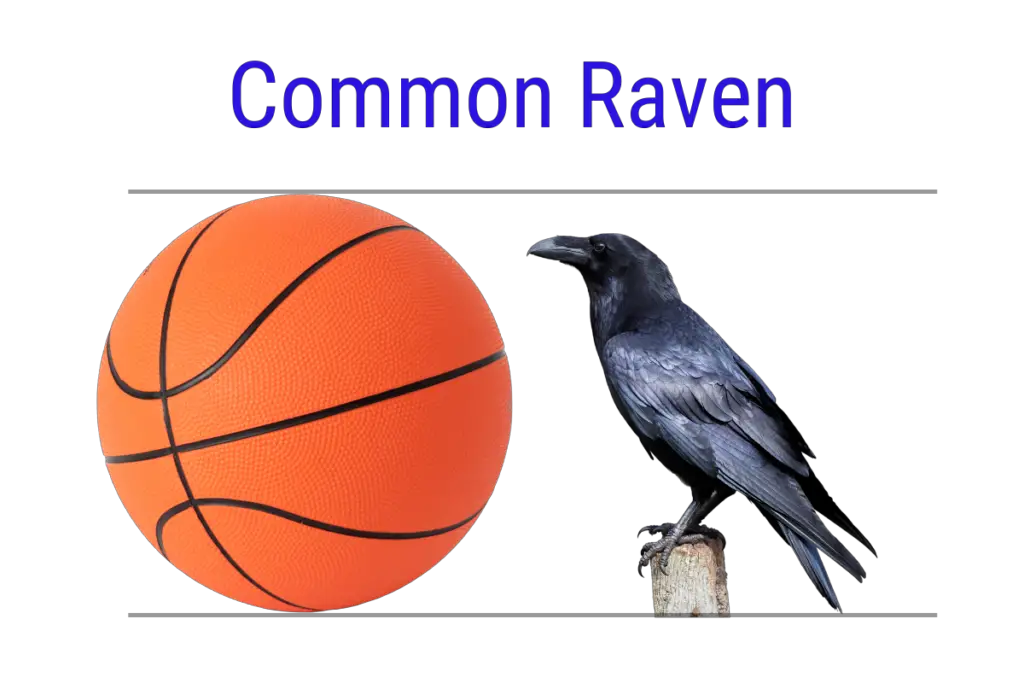
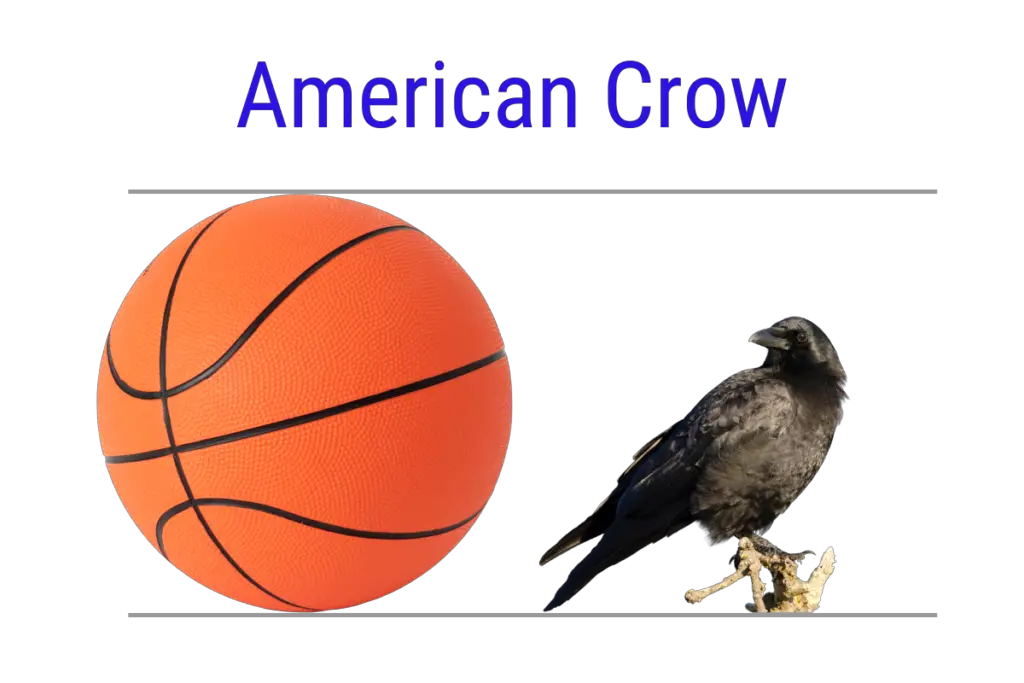
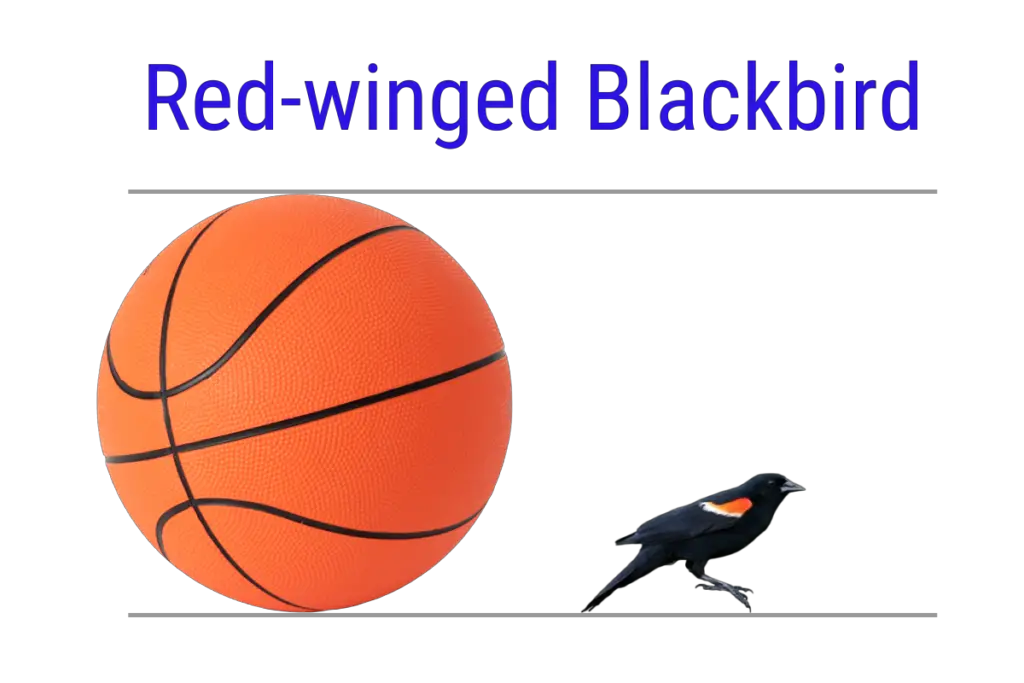
Why are Crows black? Find out here in this article here on the site.
Color Comparison
The most confusing thing in regard to these birds is the fact that they are all black.
It’s easy to tell the red-winged blackbird apart as it has the red and yellow coloring on the wrist (bend) of its wings. Rusty blackbirds however are all black when in breeding plumage and can be a bit more difficult to identify. They are between 21 and 25 cm (8.3-9.8 in.) in height.

Common ravens are glossy black and reflect a purple, blue, or greenish iridescence. This is a common occurrence in black-colored birds.
It is caused by the light refracting (bending) as it passes through the feathers. Depending on how the melanin and keratin within the feathers are layered, the light will refract different colors when viewed from certain angles.
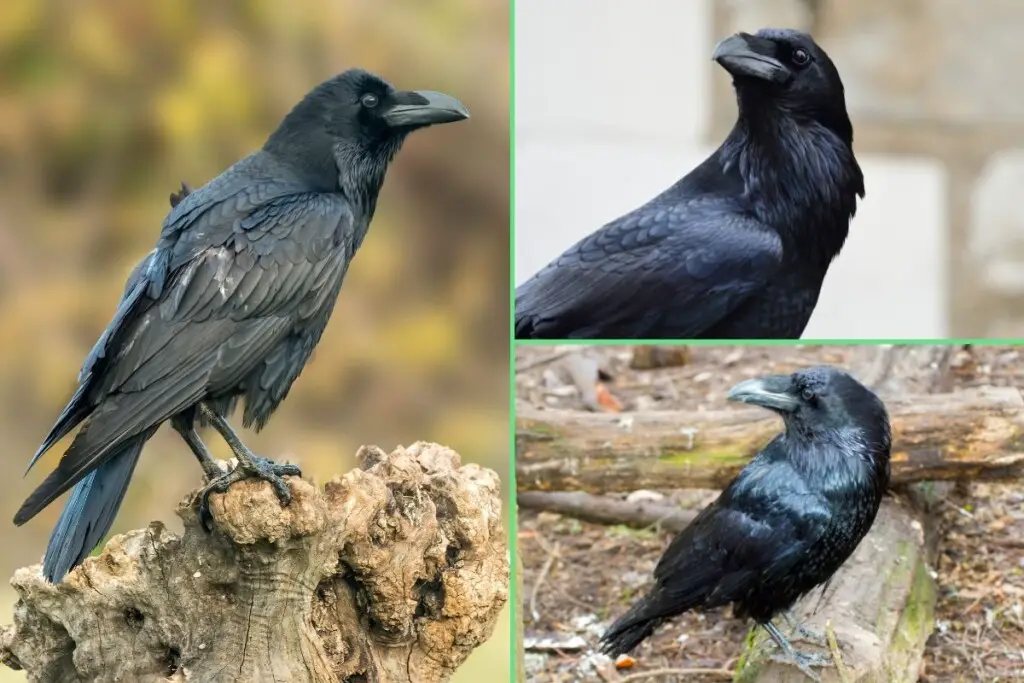
Feathers of American crows will give off a violet hue when viewed from the right angle.
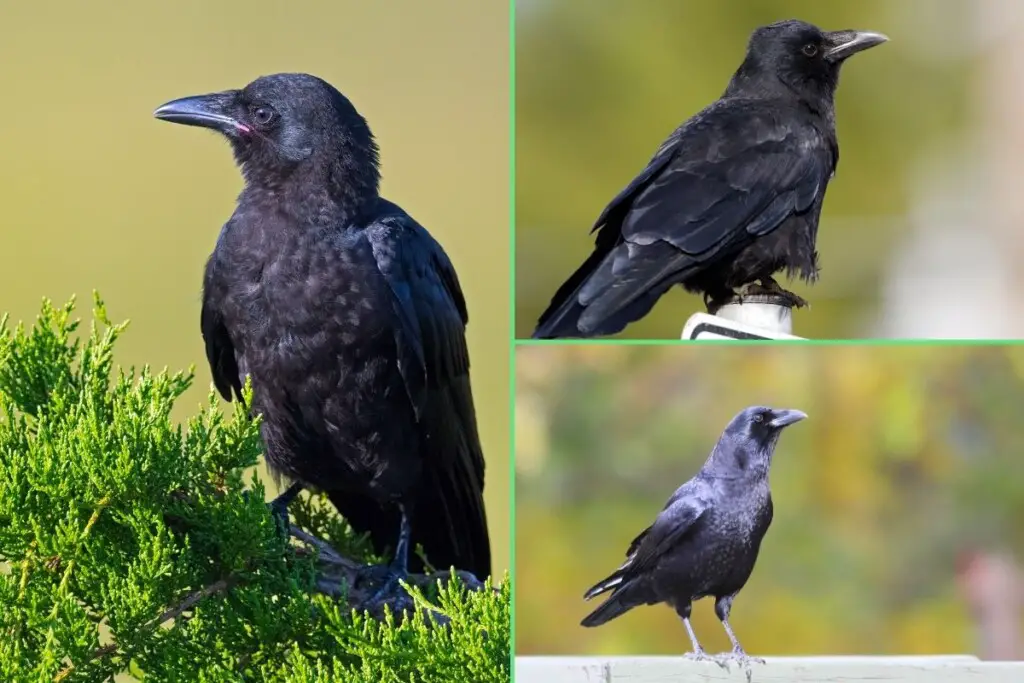
When in breeding plumage, male Rusty Blackbirds will give off a blue-green to a greenish hue.
Side-by-side Profiles
It would be nice if birds would line up nicely for us in the wild and turn side-on so we can tell the difference between them. That very rarely happens but here I can make it happen for you. Let’s look at the profiles of the three species.

In the image above, the differences in the profiles of these species are immediately apparent. The first thing that is noticeable is the shape of their bills.
The common raven has a really broad bill and the top section (called the culmen) is very rounded. The American crow also has a broad bill but the culmen is not quite as rounded. The red-winged blackbird has a short, pointed bill, reminiscent of needle-nose or long-nose pliers.
You will also notice the nasal bristles on both the two larger birds, a trait that blackbirds do not have.
In the image of the common raven below, its hackles (the elongated throat feathers) are very obvious. They will flare out these feathers during dominance displays.
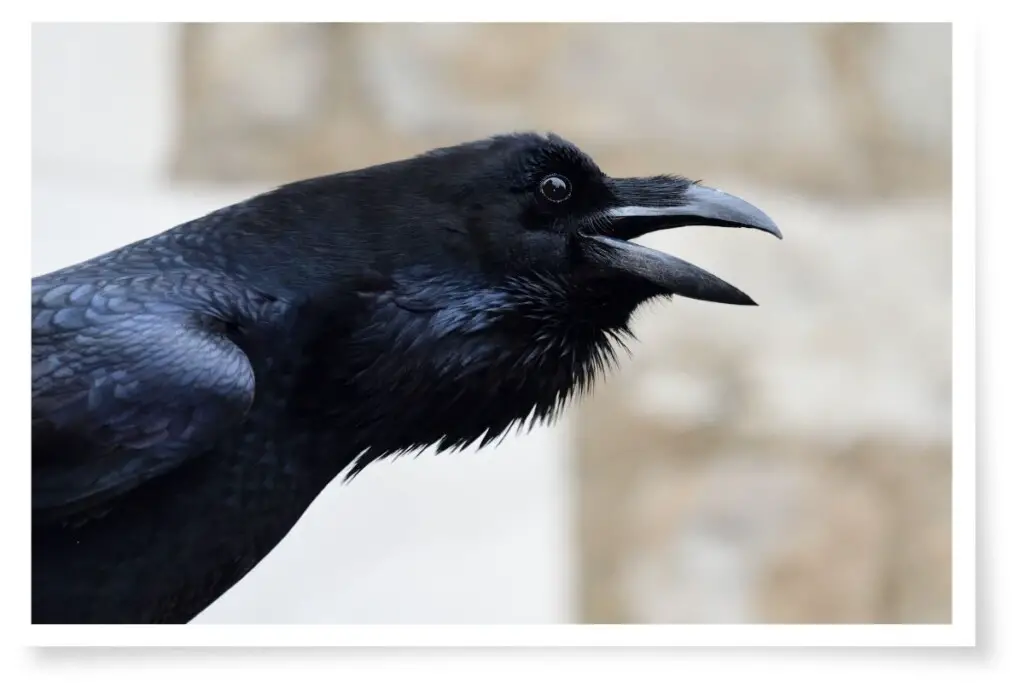
Are Magpies crows? Find out in this article.
What They Look Like In Flight
Identifying birds in flight can be difficult. There are however differences in the wing/tail shape and flight patterns of each of these 3 species that can help you figure out which one you have seen.
I will show you views of each bird from below and side-on with wings up and wings down.
Common Raven



Notice the broad wings and the diamond-shaped tail. Their wings also have long “fingers.”
American Crow



The American crows look similar to common ravens from underneath when in flight. Their wings are also similarly broad with long fingers, though slightly more rounded on the back edge. The giveaway is in the tail which is more fan-shaped in crows.
Red-winged Blackbird



These birds have a completely different shape to their wings compared to the other two species. Their wings are fan-shaped when spread and have smaller fingers. Notice also how their tails go in at the middle and then fan out towards the end like a wine glass shape.
With their wings down, they have an arch to their back.
All 3 Side-by-side
Now let’s compare each species side-by-side (one above the other on a smartphone) from different angles:
Common Raven
American Crow
Red-winged Blackbird









What These Birds Sound Like
Though certain birds look alike, they all sound different. If you can learn their calls, you can learn to tell them apart from each other.
Ravens and crows make sounds that are familiar to almost everyone on the planet but how do you tell them apart? Ravens tend to ‘croak’ while crows will ‘caw.’
Common Raven
American Crow
Unlike ravens and crows, blackbirds have beautiful songs:
Red-winged
Rusty
I’m going to add the Brewer’s Blackbird into the mix here as it is also common in North America. They are similar in size to the rusty and the red-winged at around 21-25 cm (8.3-9.8 in.).
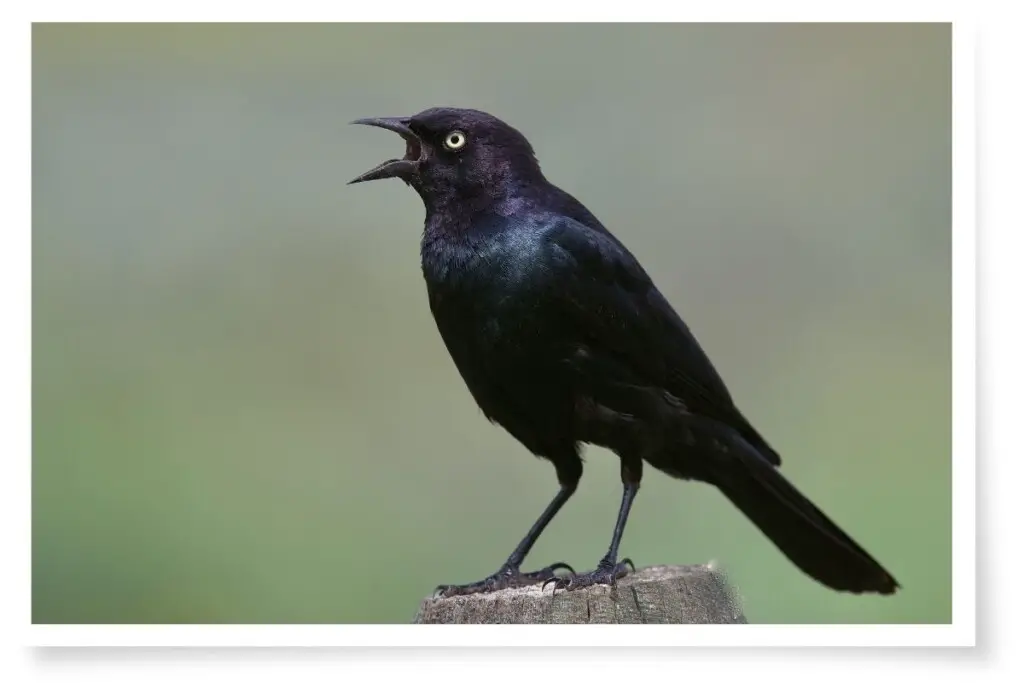
Brewer’s
You can hear more bird calls in this article here on the site.
Where You’ll Find Them
The table below shows you where you can find each of these species. I’ve also added the type of habitats they prefer as this can help when trying to identify which bird you’ve seen.
| Species | Found | Habitat |
|---|---|---|
| Common Raven | All across Alaska. Western U.S. – Montana, Wyoming, Colorado, Oklahoma, New Mexico, Texas. Eastern U.S. – Minnesota, Wisconsin, Michigan, New York, Maine, New Hampshire, Massachusetts, Connecticut, New Jersey, Pennsylvania, Maryland, West Virginia, Kentucky, Tennessee, North Carolina, South Carolina, Georgia. | At home in any habitat |
| American Crow | All across the U.S. and the southern coast of Alaska. | Requires open areas with some scattered trees, woodlots, windbreaks, or forest edges. Farmland, pasture, refuse dumps, city parks, golf courses, cemeteries, yards, vacant lots, highway rights-of-way, feedlots, and the shores of rivers, streams, and marshes. Generally, avoid large areas of forest. |
| Red-winged | All across the U.S. and southeastern parts of Alaska. | Wetlands: freshwater marsh, saltwater marsh, and rice paddies. Upland habitats include sedge meadows, alfalfa fields, and other croplands. |
| Rusty | Most of Alaska. All across the U.S. excluding parts of Texas, New Mexico, Arizona, Colorado, Nevada, Utah, California, Oregon, Idaho, Washington, and Wyoming. | Wet coniferous and mixed forests from the northern edge of the tundra southward to the beginning of deciduous forests and grasslands. Frequently found in fens, alder–willow bogs, muskegs, beaver ponds, and other openings in the forest such as the swampy shores of lakes or streams. |
| Brewer’s | All across the U.S. excluding parts of New England, North and South Carolina, and New York. | Highly adaptable to many habitats. Prefers open, human-modified habitats such as lawns, golf courses, cemeteries, urban parks and campus areas, and vacant lots with nearby trees and bushy tangles. |
Conclusion
That completes our analysis of these three similar species. I hope that you now have a better understanding of them. It does take practice to identify these birds quickly in the field so don’t be too hard on yourself, to begin with.

You will find many more articles about birdwatching, bird photography, and general bird facts here on birdwatchworld.com. Browse a little before you go about the rest of your day.
Thank you for reading this post today. Happy birding and I will see you out there…
References
- Birds Of The World – The Cornell Lab of Ornithology
- All bird calls sourced from xeno-canto.org
- Additional bird information – audubon.org


